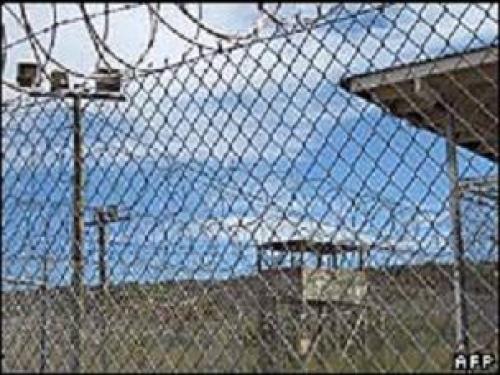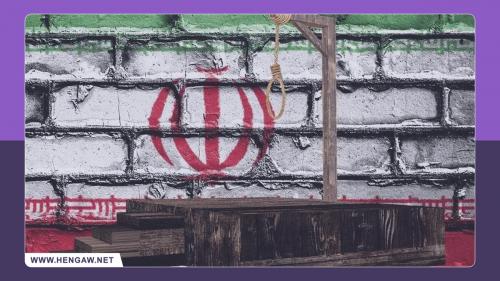18 March 2020 :
Inside the Most Secret Place at Guantánamo Bay----At Camp 7, the military holds prisoners who were previously held and interrogated by the C.I.A. But in recent years, conditions have eased up a bit. [This article was produced in partnership with the Pulitzer Center on Crisis Reporting.]
For years, starting from the time they were held and interrogated by the C.I.A. after the Sept. 11, 2001, attacks, the prisoners spent their days and nights in isolation, each man locked alone in a cell, at times engulfed in darkness and white noise.
During the period they were held in the C.I.A.’s network of secret prisons, they would get solid food if they pleased their American captors, liquids if they did not and a mock medical procedure called “rectal feeding” if they refused their rations.
Later, once they arrived at Guantánamo Bay and were placed in the base’s most clandestine of lockups, called Camp 7, they were kept in isolation most of the day. When they were allowed out of their cells, guards would take them in shackles and chains so short they could only shuffle.
Times have changed. Now the military allows the 14 former C.I.A. prisoners to walk unencumbered from their cells in 2 separate blocks, known as Alpha and Bravo, to enclosed open-air, recreation pens. There, they can pray and share meals together, in groups of 6 or 8. Some prisoners on Bravo block have fashioned a Ping-Pong table.
Each block has a cell that the military has converted into a communal pantry with a refrigerator, microwave and spices for meal preparations. With permission from the prison last year, a Marine lawyer donated a $50 leg of lamb to the prisoners, who figured out how to roast it in the microwave.
Camp 7, which houses Khalid Shaikh Mohammed and 4 other men accused of orchestrating the Sept. 11, 2001 attacks, is by far the most mysterious prison at Guantánamo. Both its location and price tag are classified. Lawyers who obtained court orders to see the prison have been transported there in windowless vans.
A succession of commanders have sought funding from Congress to replace it, describing the structure as deteriorating and potentially dangerous for the guard force.
In the past 2 years, according to war court testimony and people familiar with the prison, the military has eased the conditions of confinement of Guantánamo’s high-value detainees, 6 of whom await death-penalty trials. It is a quality-of-life improvement for them that has also reduced the workload of the guards at a time when the military is reducing the number of troops assigned to detention operations at Guantánamo.
Now the troops track the prisoners through cameras and other surveillance during 20 hours a day of what the warden, Col. Steven G. Yamashita, has described as “a communal living arrangement” that is starkly different than their years of isolation and indignity in C.I.A. detention.
“They are free to move about most of the day” within the confines of their block, Colonel Yamashita testified at the war court last year. He said he instituted the change when he took charge of the guard force in June 2018, although the decision to do so was made before he took over.
Lockdown is generally limited to 4 hours a day, typically from 2 a.m. to 4 a.m. and from 2 p.m. to 4 p.m. During those periods, the prisoners go inside their 86-square-foot cells, behind 2 doors, a control room locks them in and the soldiers come onto the blocks. If there is a need, they search a cell or prisoner. They also inspect the food pantry, another communal cell with prison-approved books and videos, and the open-air recreation yard.
“There’s been a real relaxation of the circumstances of their confinement that has removed a lot of the absurdly unnecessary restrictions for the previous 10 years,” said Maj. James D. Valentine, a Marine lawyer. He represents two former C.I.A. prisoners who are held as Law of War detainees at the maximum-security prison, meaning neither man is charged with a crime at the war court.
Past commanders have described the military’s steady move toward a doctrine of communal confinement at Guantánamo as a reward for following the rules that benefits both the health and safety of the guard force and the detainees. Continuous close contact can be dangerous. Single cell confinement can be mind numbing.
“Isolation is too personal and resource intensive,” said Stephen N. Xenakis, a psychiatrist and retired Army brigadier general who treats U.S. war veterans who suffer from post-traumatic stress disorder when he is not consulting on detainee cases at Guantánamo. “It’s less of a burden on the staff if they’re taking care of each other. Your community is going to be healthier, easier to manage and safer.”
Commanders have said the U.S. military provides no formal torture-survivor treatment for the men in Camp 7, whose lawyers say they suffer sleeplessness, brain injuries, back and joint pain and other disorders they blame on their brutal interrogations while in C.I.A. custody.
But Dr. Xenakis said one benefit of communal confinement is that the captives can care for each other. He compared it to “an old concept in military medicine” that was first adopted in psychiatric clinics at Walter Reed Medical Center in 1971, during the Vietnam War, called “milieu therapy.”
After a prisoner called Abd al Hadi al Iraqi underwent five spine surgeries in nine months at Guantánamo starting in September 2017, other detainees helped him with his meals, personal hygiene and others aspects of daily life. He relies on a four-wheeled walker to get around, and has to sit in a chair when the other prisoners on Alpha block kneel in prayer.
In the summer of 2018, a spokeswoman for the prison at the time described the communal approach as a component of end-of-life care for the men of Camp 7, now aged 32 to 59, who may very well die at Guantánamo Bay.
“Picture in your mind elderly detainees, brothers taking care of one another,” said then-Cmdr. Anne E. Leanos of the Navy. “That is the humane way ahead.”
Trips from the prison — to court, legal appointments and meetings with the International Red Cross — still require security measures that were once routine within Camp 7: 2 to 3 soldiers with their hands on each captive’s arm as well as a back or shoulder, guiding a prisoner who is shackled at the wrists and ankles.
But the Army guards and Navy corpsmen who previously delivered meals, medication and supplies to each detainee through a slot in his cell door, and patrolled the corridor outside each cell’s double steel door are no longer routinely on the cellblocks.
Now, it is the detainees who go to the guards, at a sally port at the end of the block, to fetch their deliveries, answer questions and exchange supplies except during the four hours a day they are confined to their cells. It is a style of detention that when put into practice in other portions of the prison years ago decreased friction between the captives and the captors.
The current prison leadership declined to discuss how the easing of conditions has affected prison operations which, military officials say, is undergoing a phased reduction of troops.
Last year, some 1,800 soldiers on nine-month tours, mostly National Guard and Reserve forces, were assigned to the detention operation. Guantánamo currently holds 40 prisoners, who are typically spread across three or four different sites, including Camp 7.
Now the Southern Command has begun thinning the force, starting with a 12 to 14 % reduction, according to military officials, in a move that should reduce the more than $13 million a year per-prisoner cost.
But the idea of easing conditions at Camp 7 dates back to January 2009, when Adm. Patrick Walsh, vice chief of Naval Operations, evaluated Guantánamo’s compliance with the Geneva Conventions for the Obama administration. The admiral recommended that accommodations be made to let the detainees “communicate with each other from within their cells” and “maximize communal living and recreation interaction within reasonable security concerns."
The liberalization of life there has manifested itself in a number of ways that may sound small to an outsider but have been described as meaningful for the men after years of deprivation.
Prisoners can now wear watches — nondigital models, which have no possibility of tapping into the cellular towers that arrived on base in 2016.
Lawyers or the Red Cross can donate them, along with orthopedic and other shoes — no laces allowed.
Clothing is no longer uniform. The 1st man to be waterboarded by the C.I.A., a Palestinian known as Abu Zubaydah, has a change of clothes — hospital-like scrubs — when he works out in the recreation yard.
Meals have become a major pastime. Detainees repurpose chow hall rations in the pantry using a prison-issue plastic “spork.” Knives and other basic cooking utensils are prohibited at the prison.
Just after Ramadan, Major Valentine purchased a frozen leg of lamb at the Navy base commissary — labeled halal for Islam’s dietary restrictions — and with permission of the prison commanders gave it as a gift to one of his clients, presenting a particular culinary challenge: It was too big to fit inside the military-issue microwave.
According to multiple accounts, one prisoner held it to a cell door jamb and another slammed the door, breaking it into cooking sized chunks.
With every corner of the prison under video surveillance, the guards were no doubt able to see what happened. But the prison declined to discuss life inside Camp 7. What goes on there is classified.









